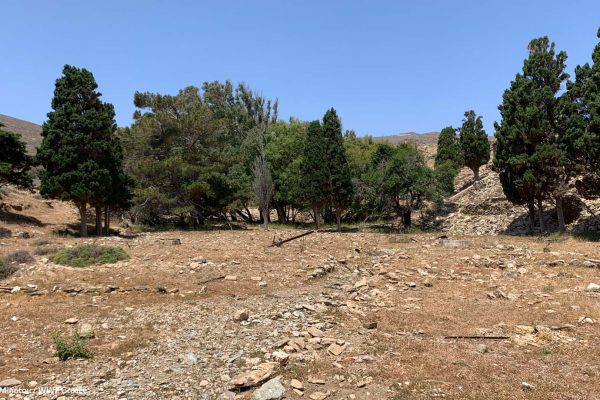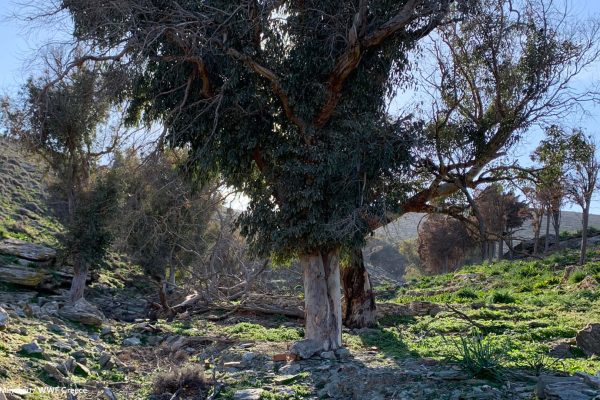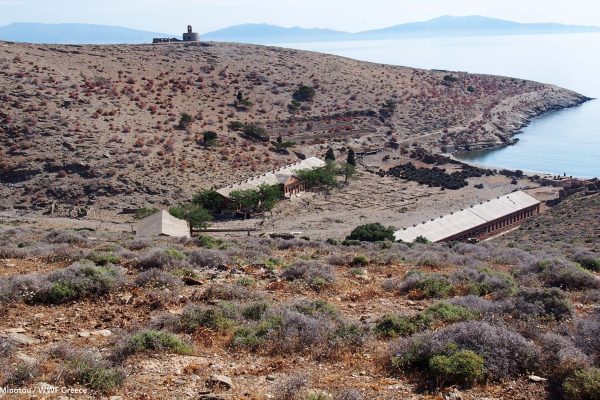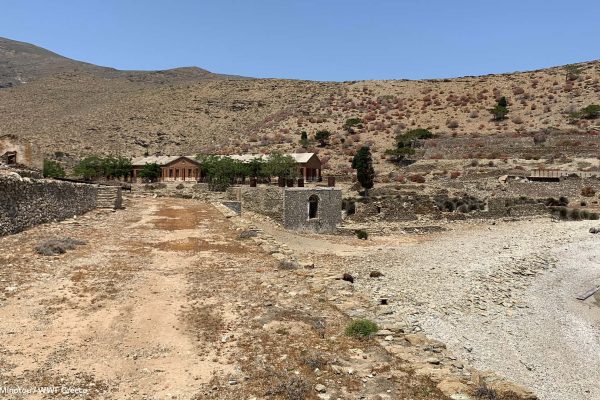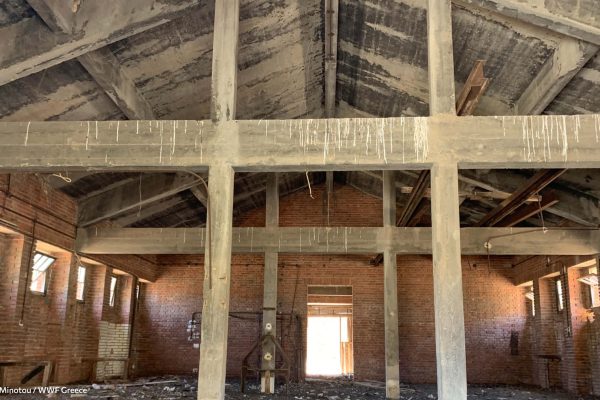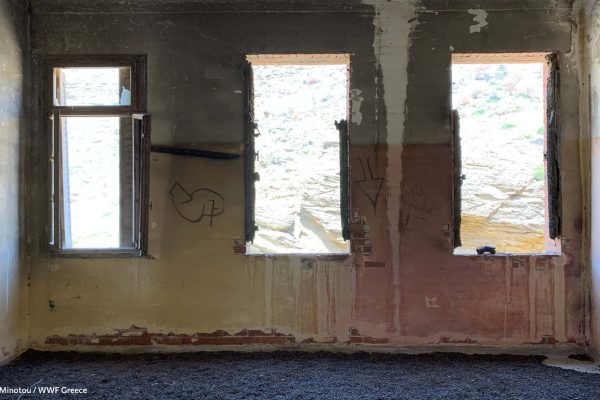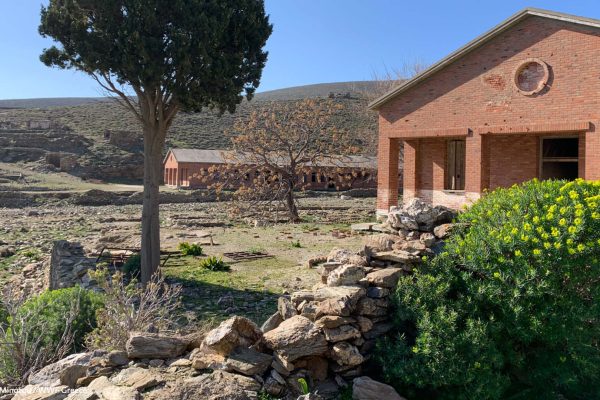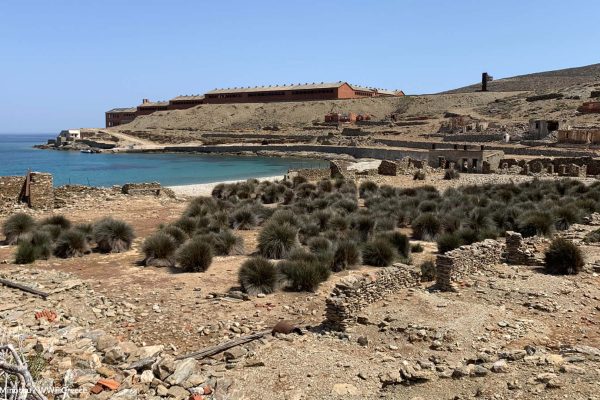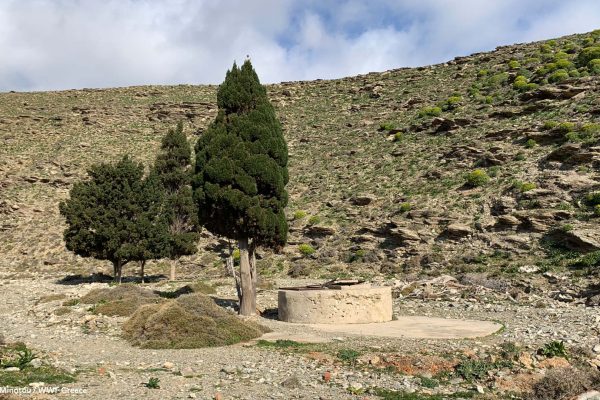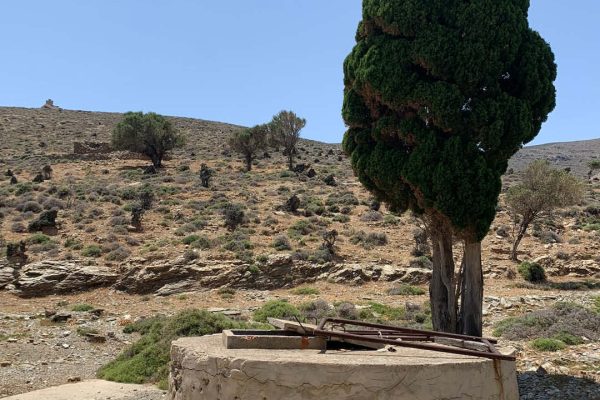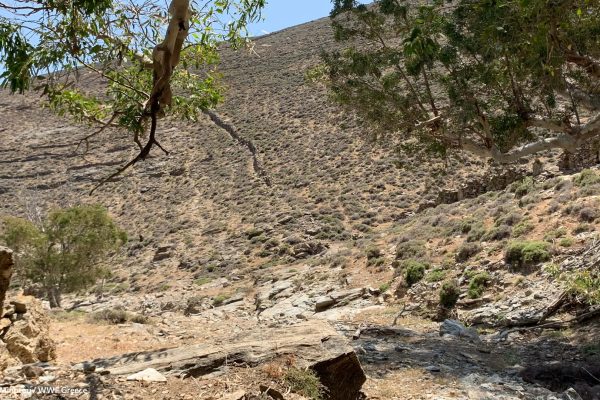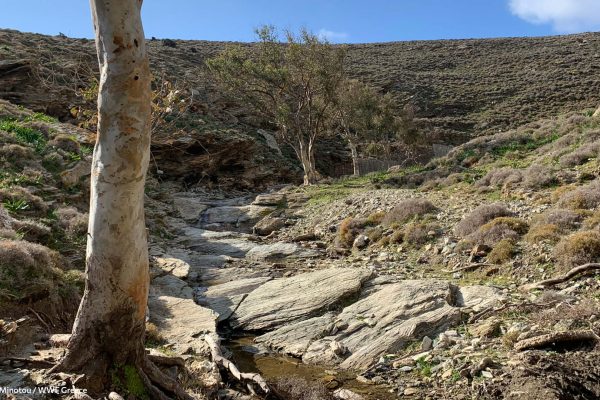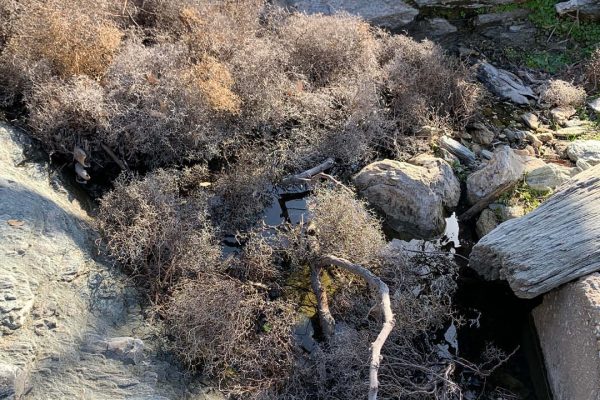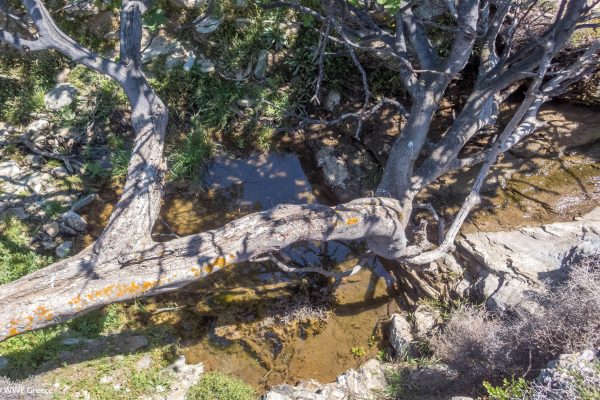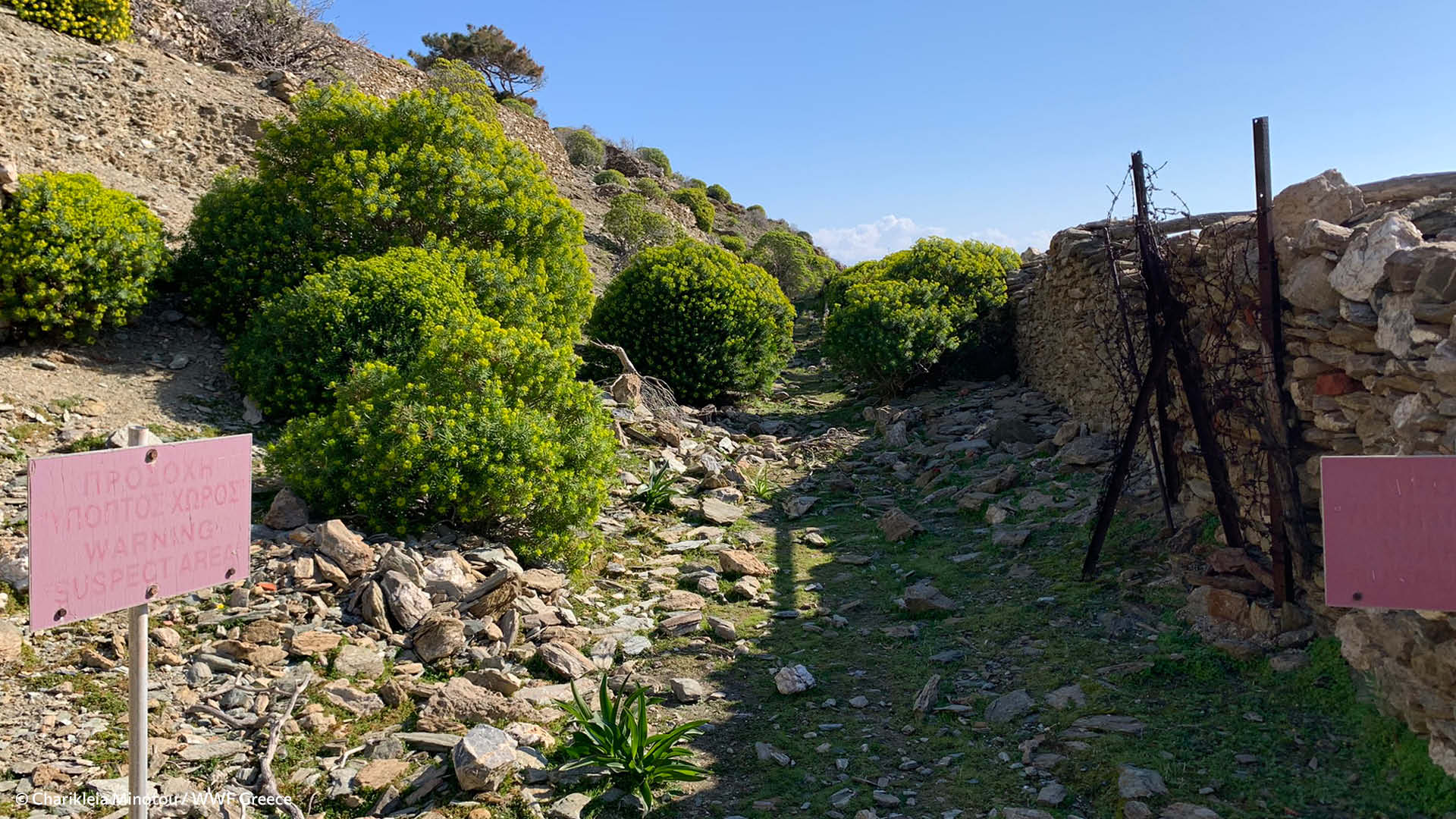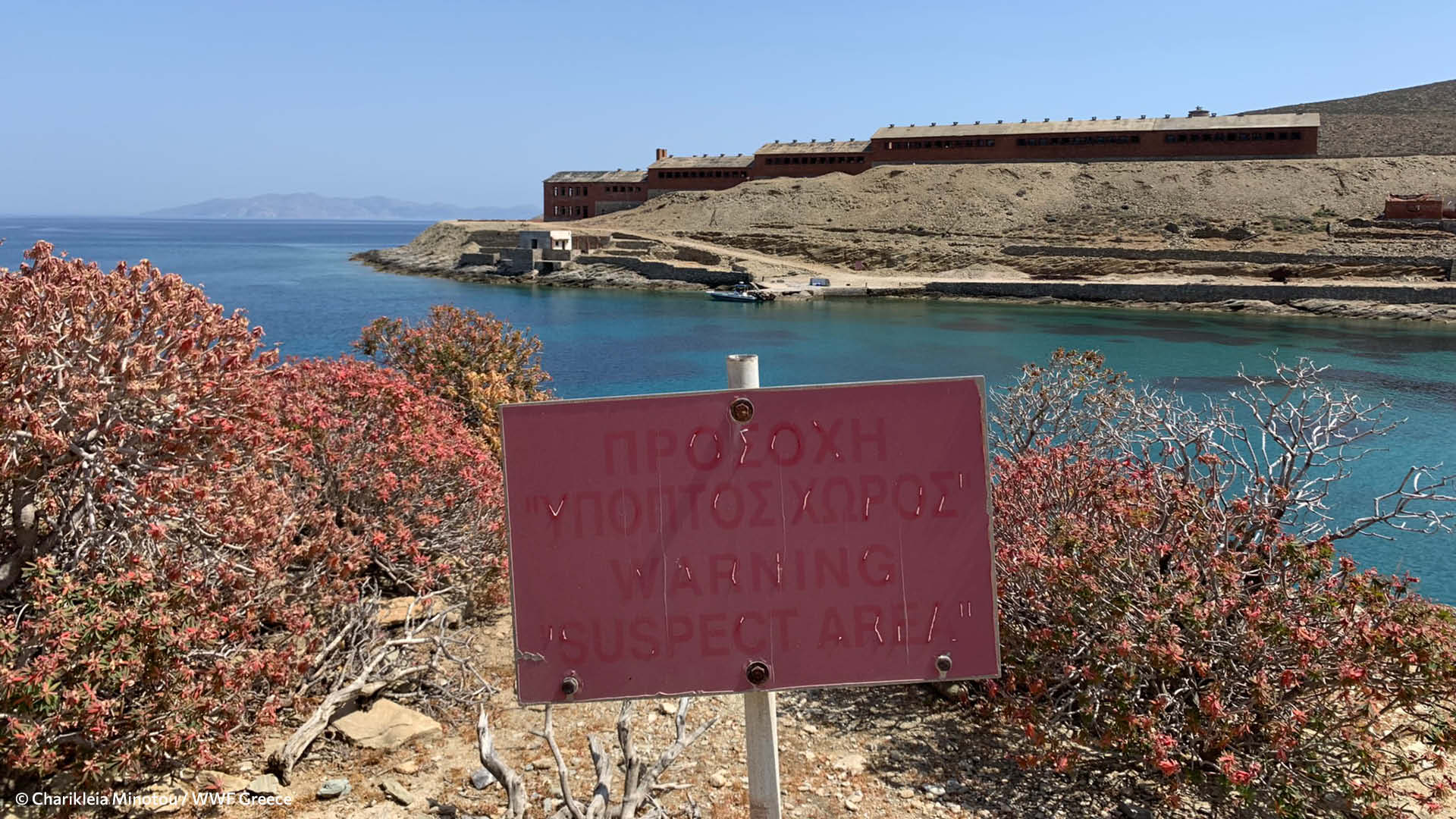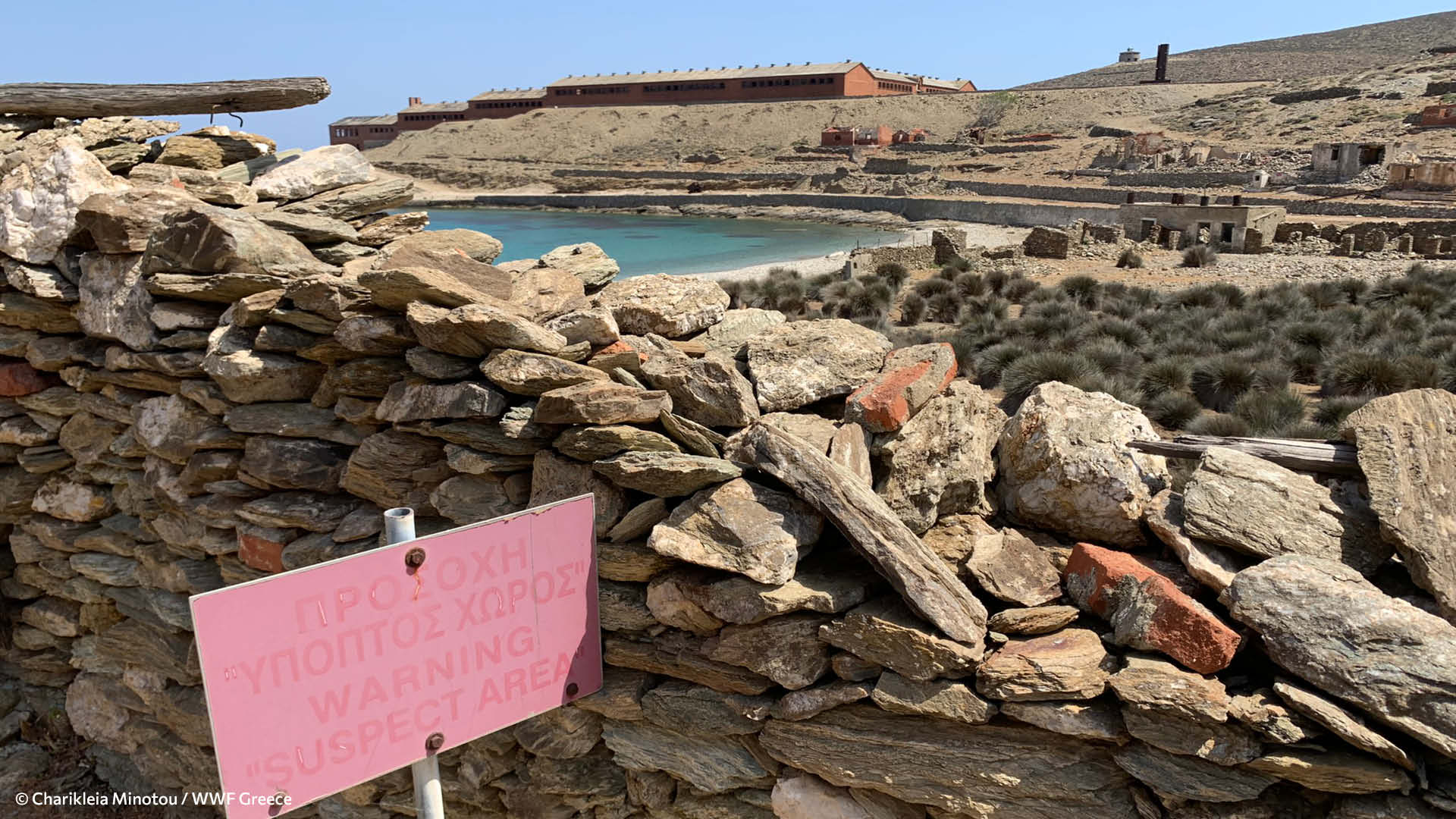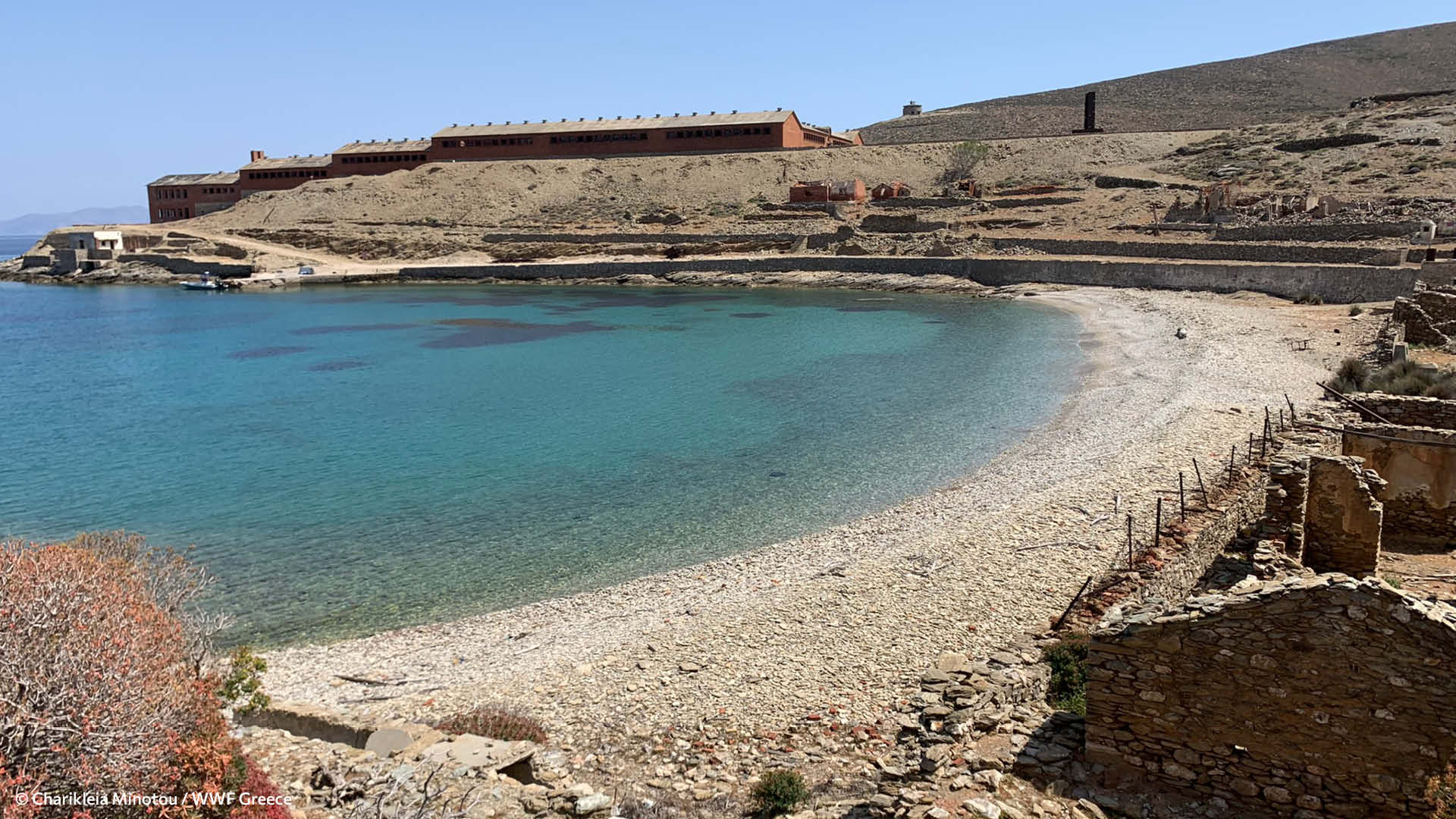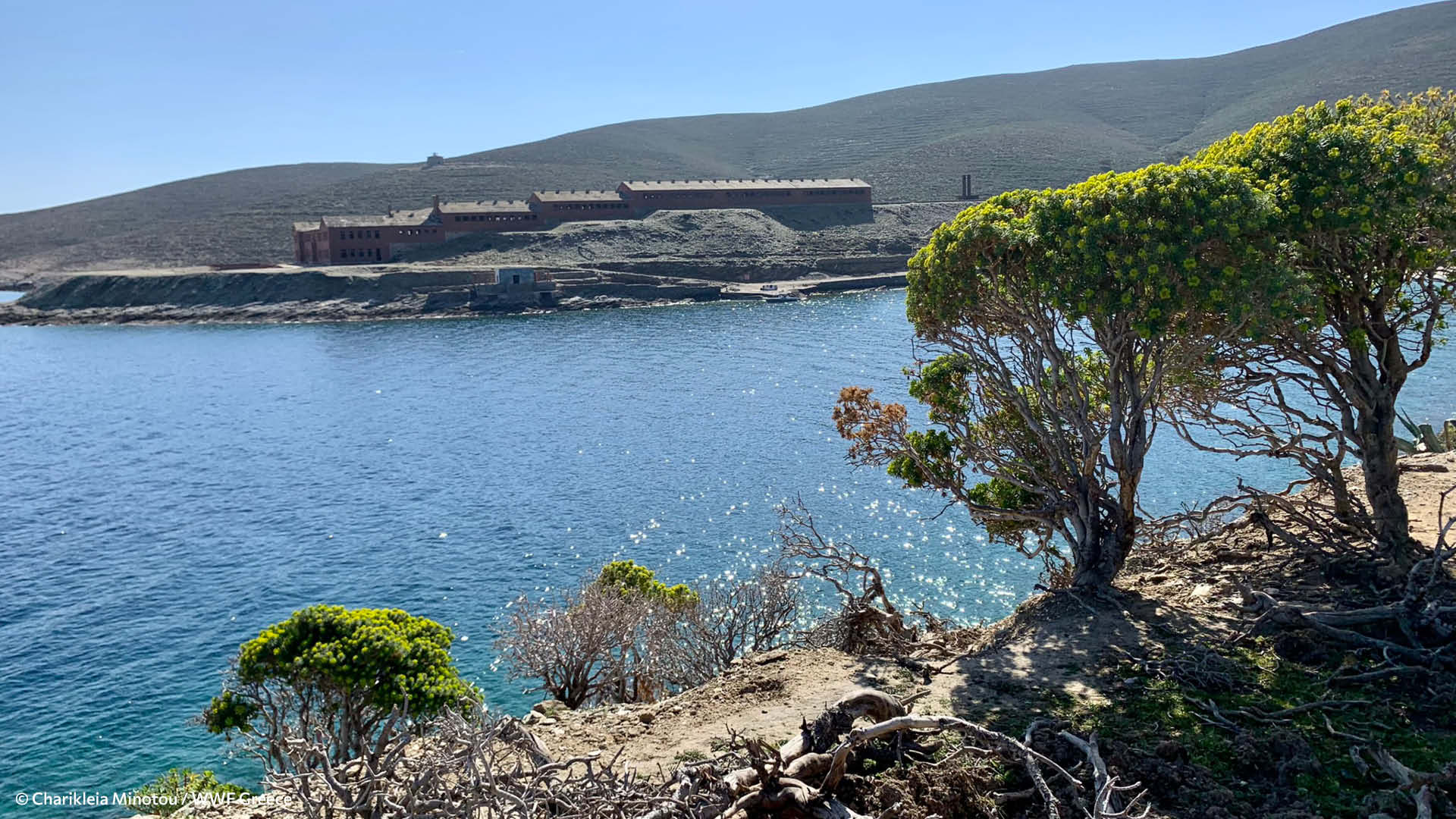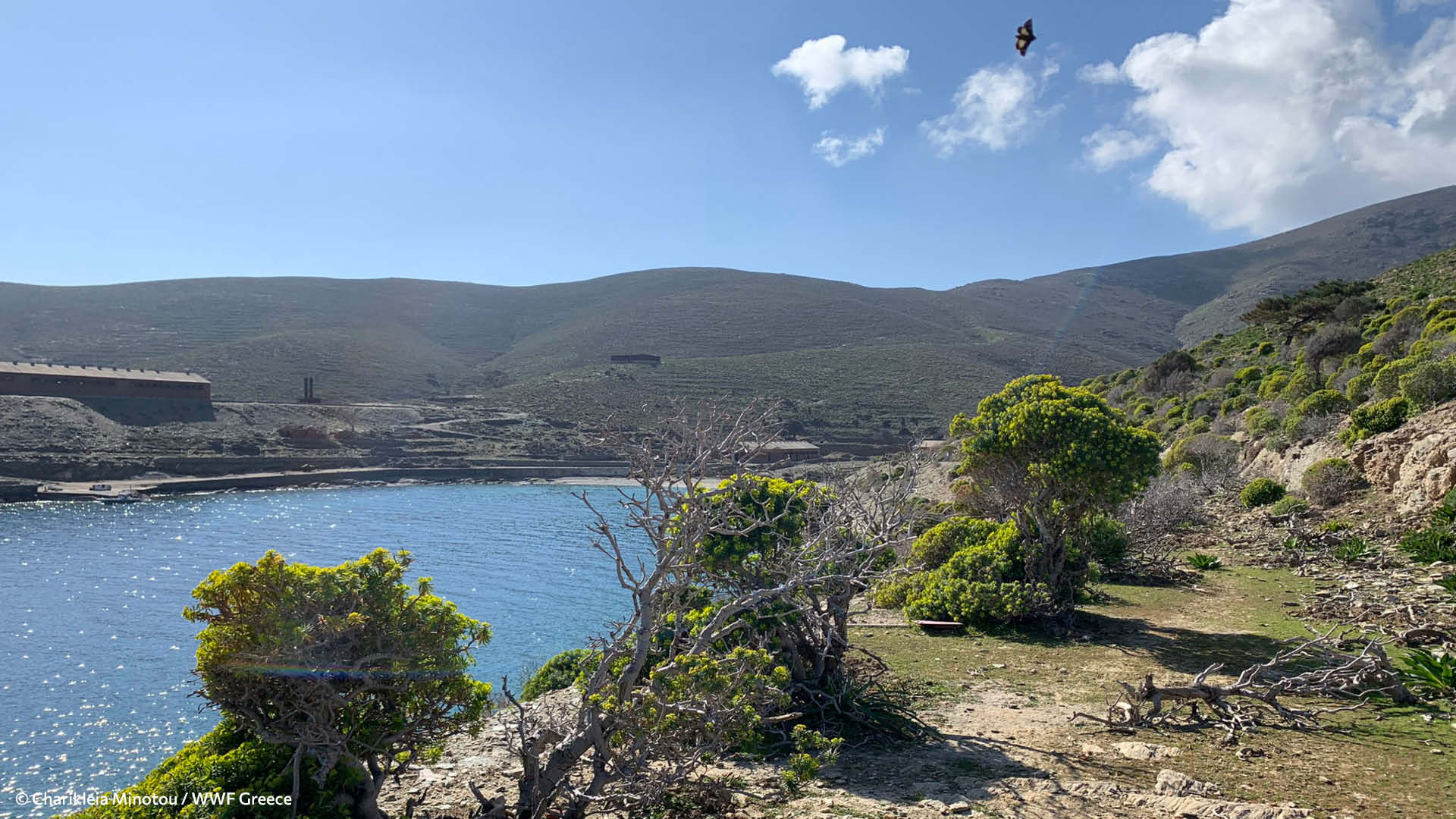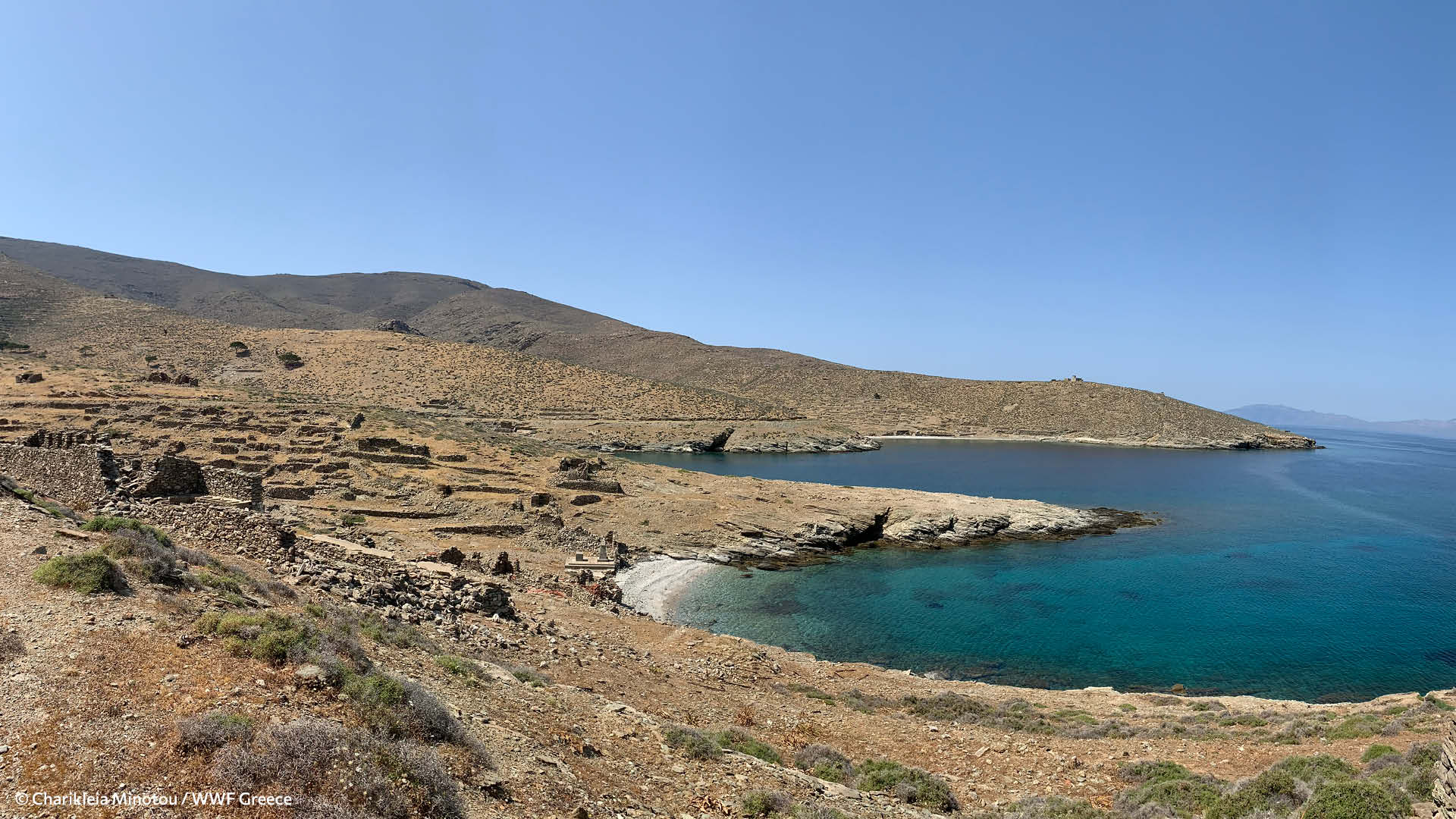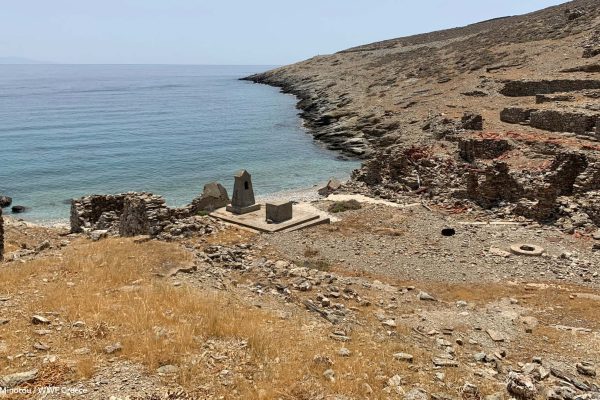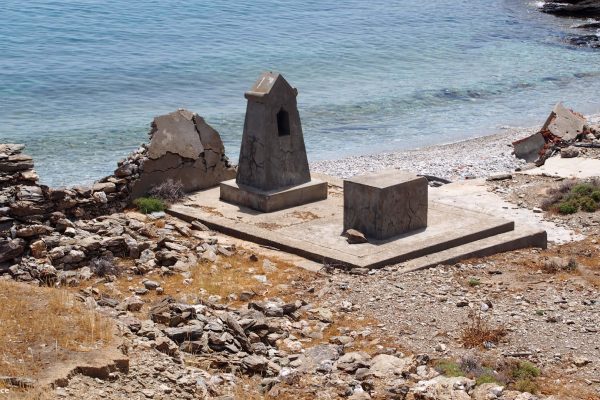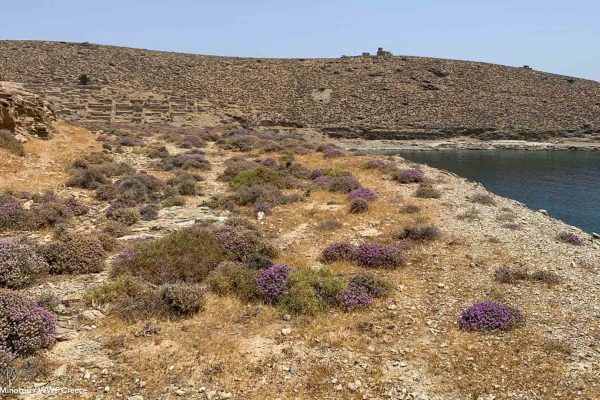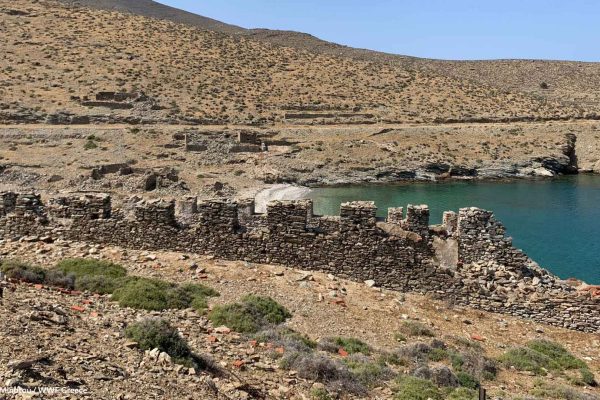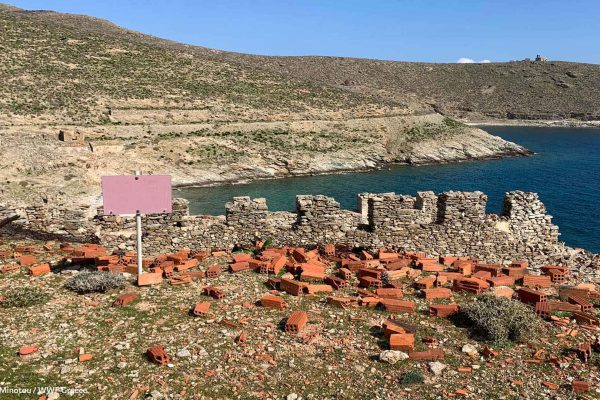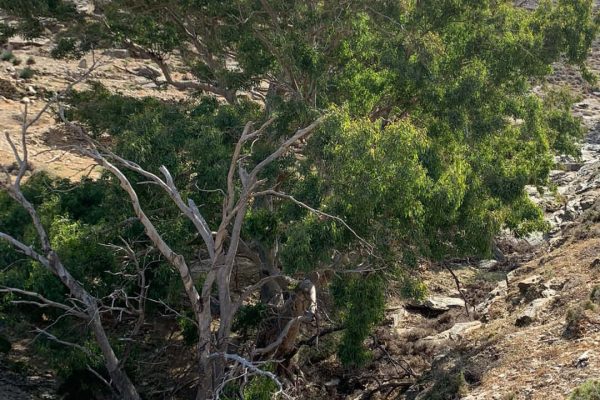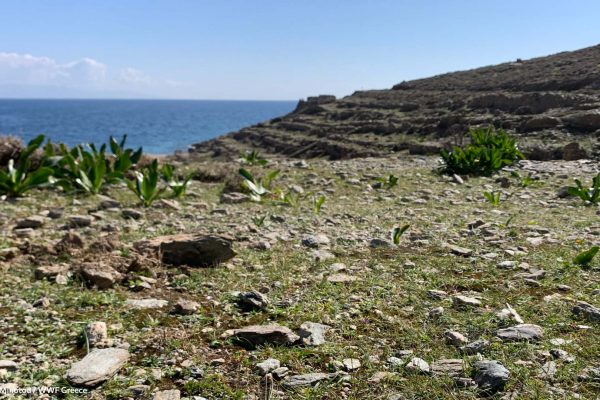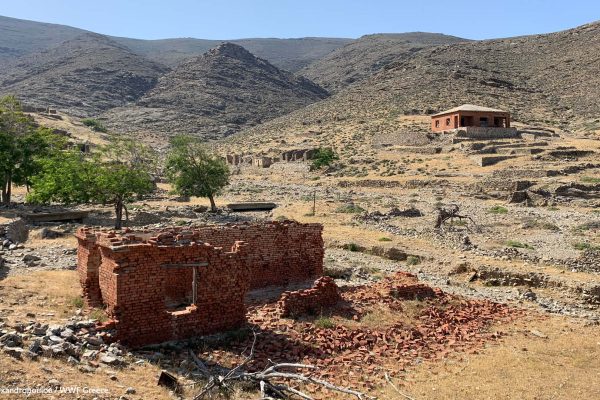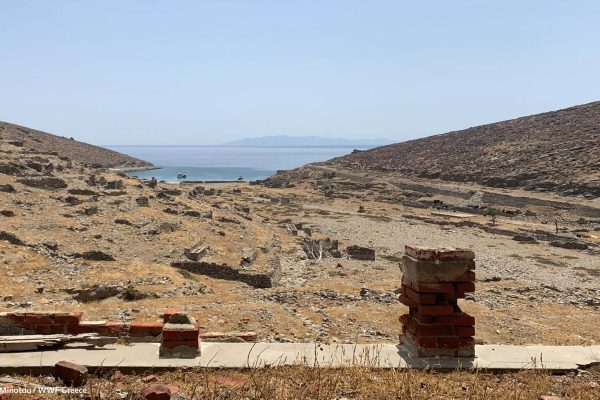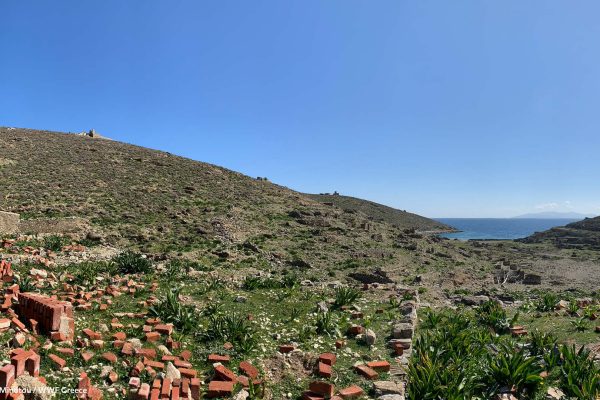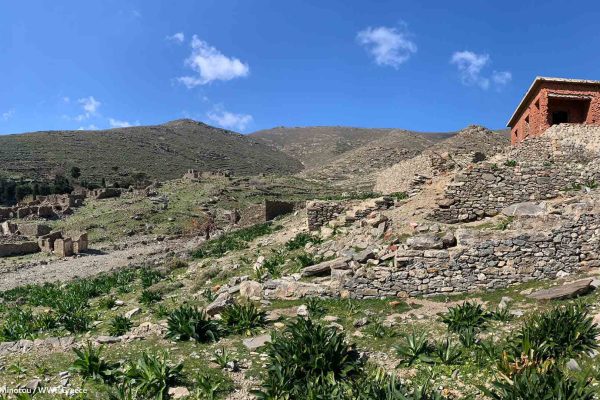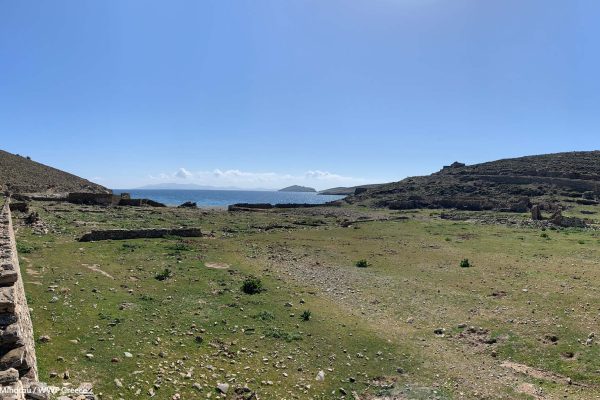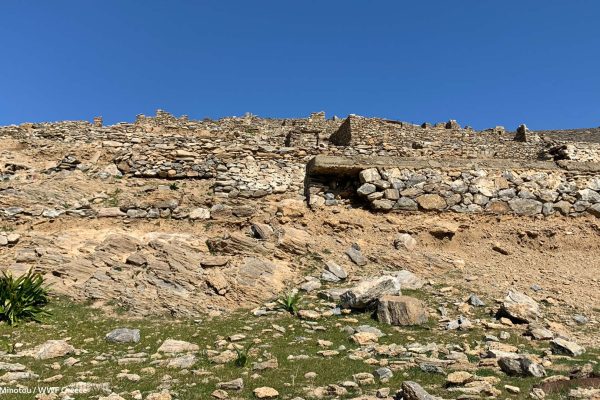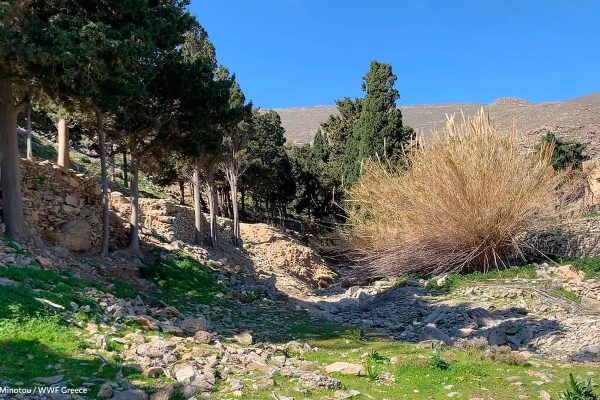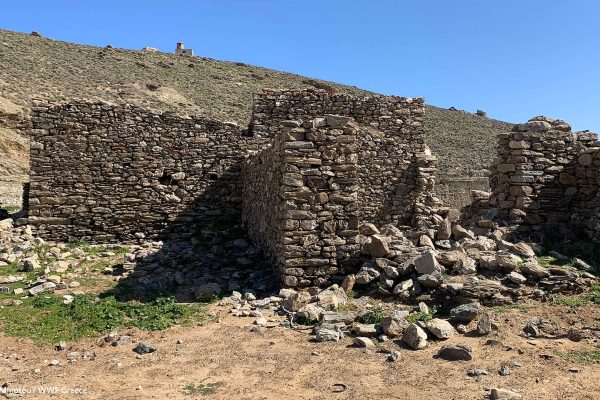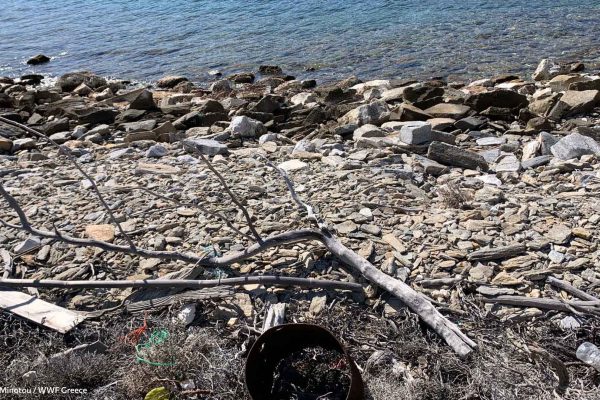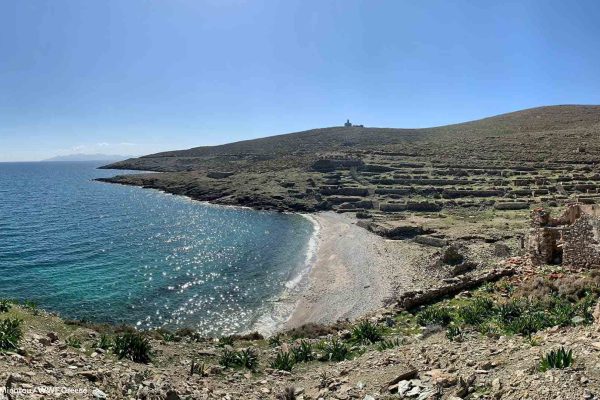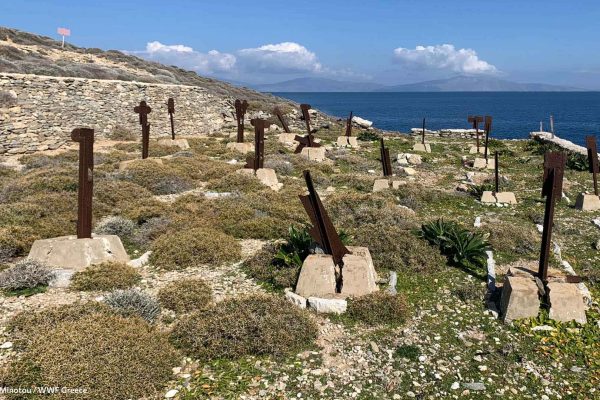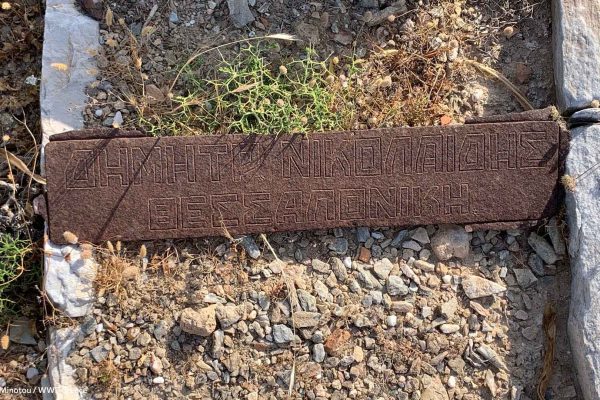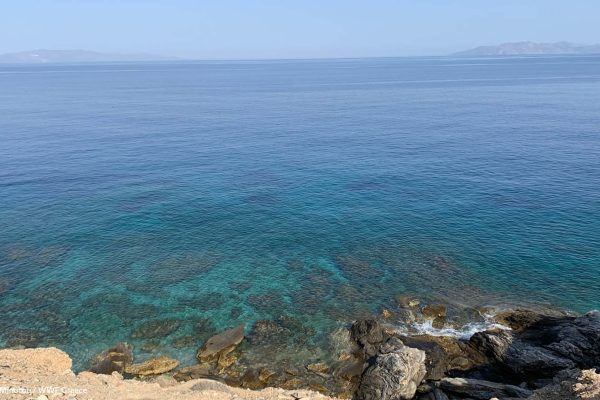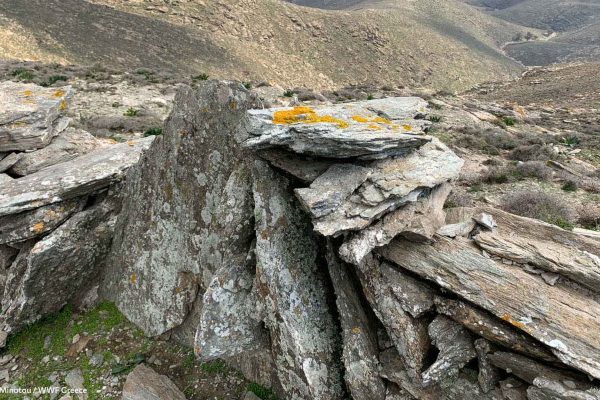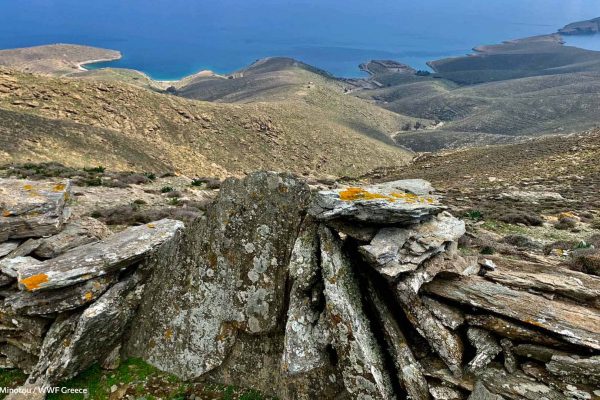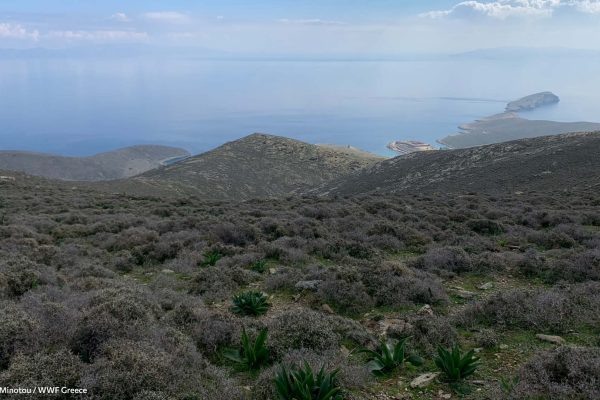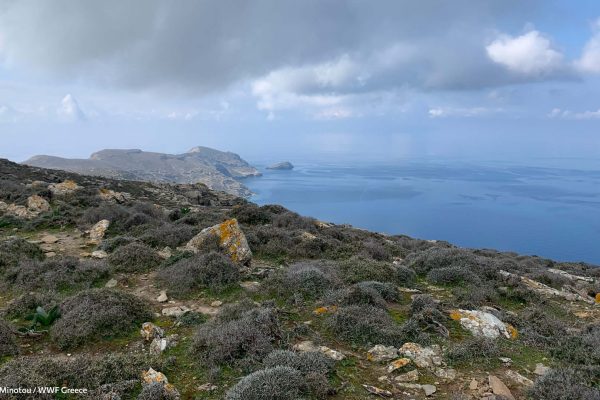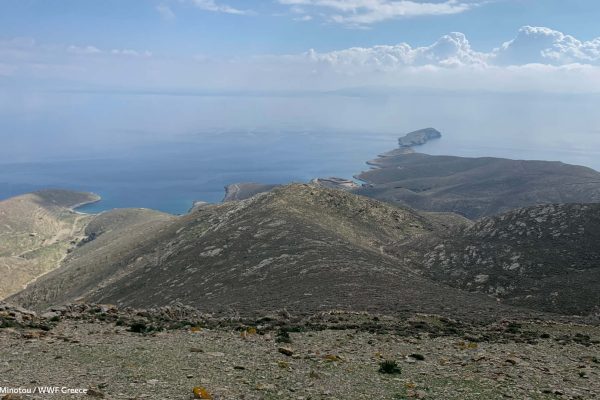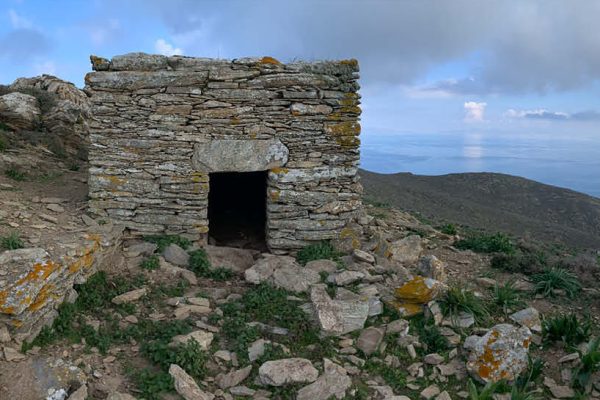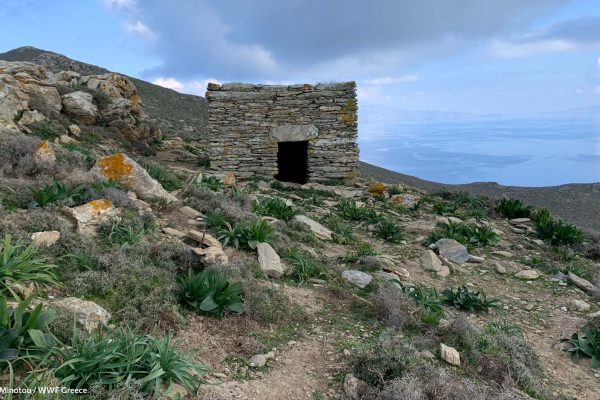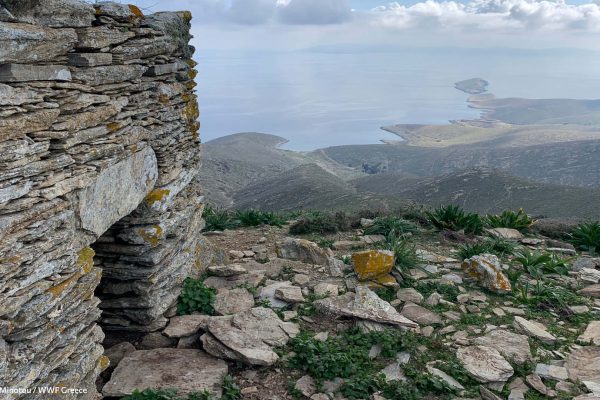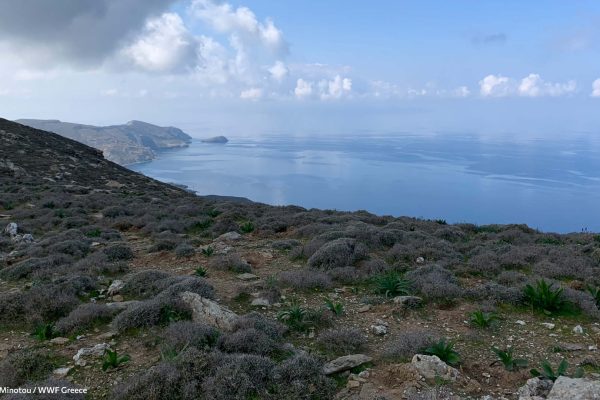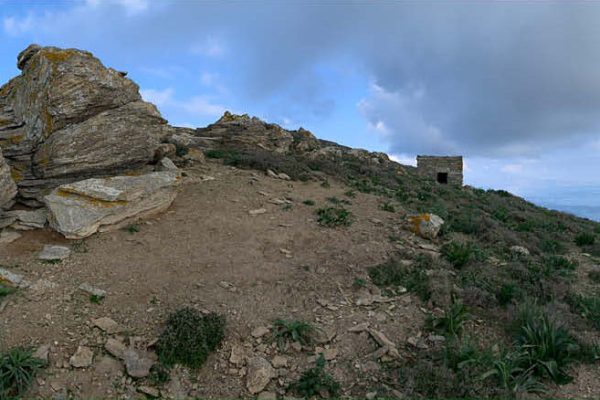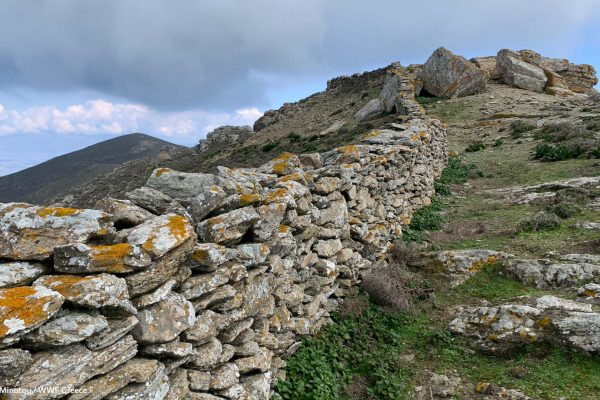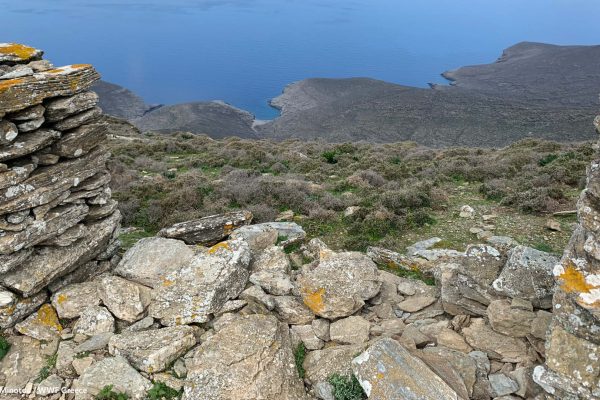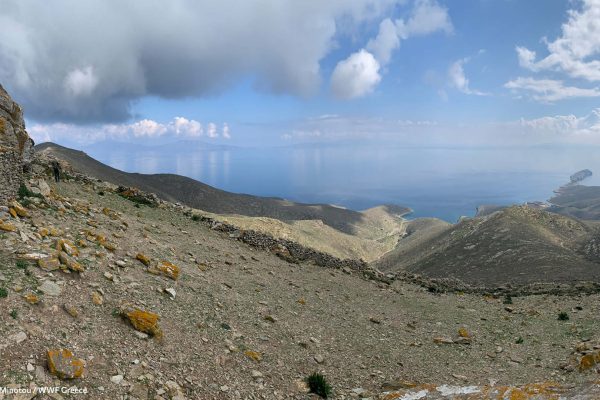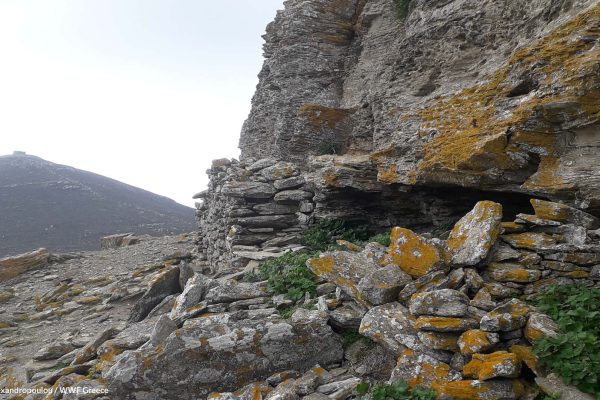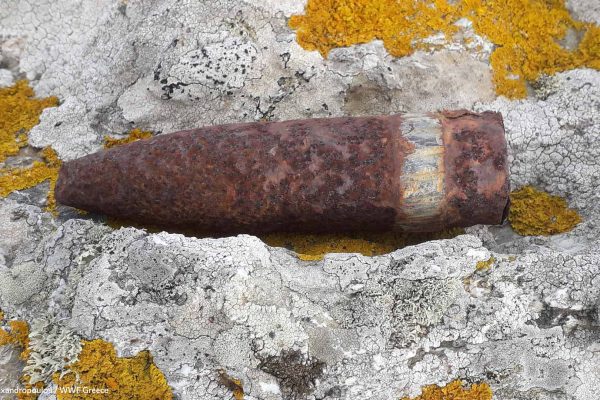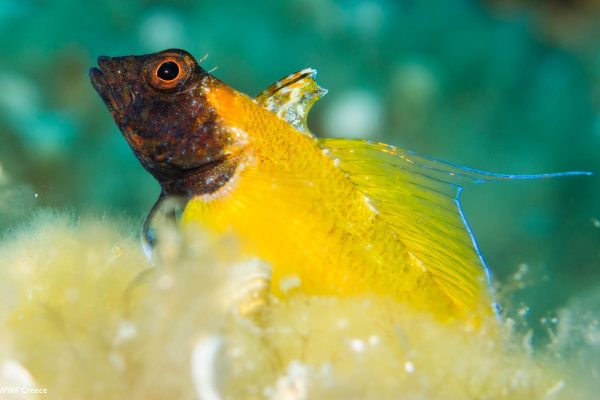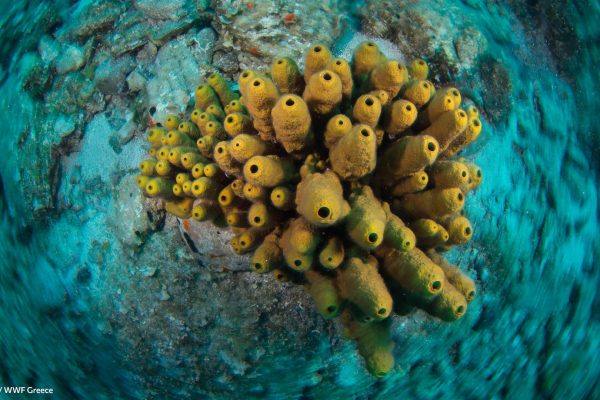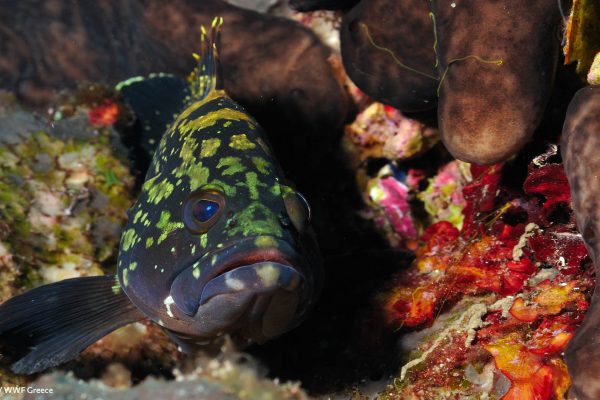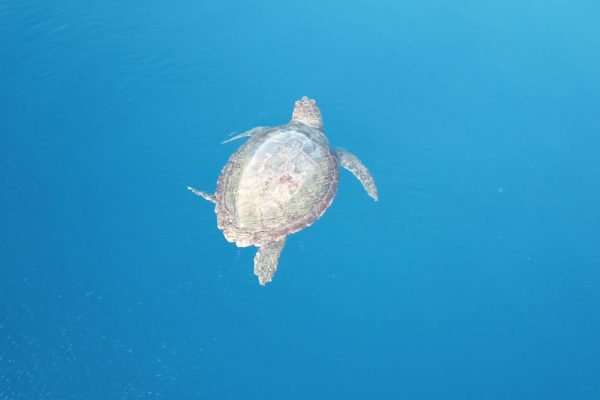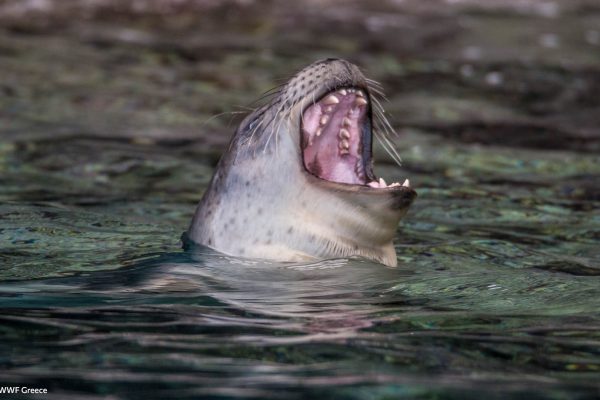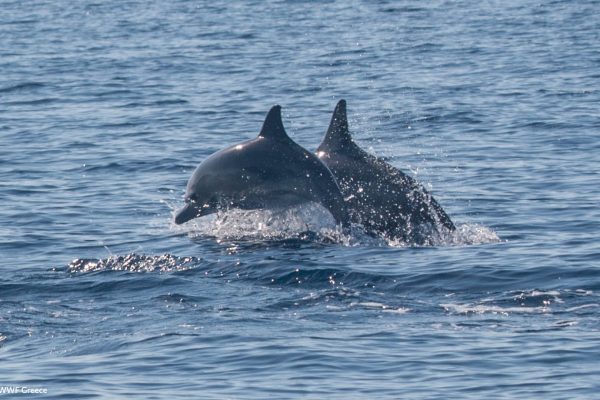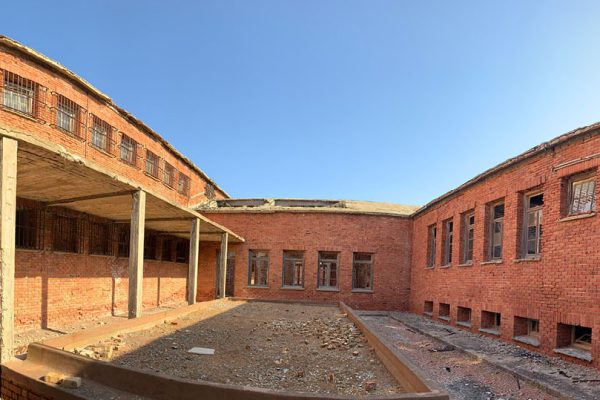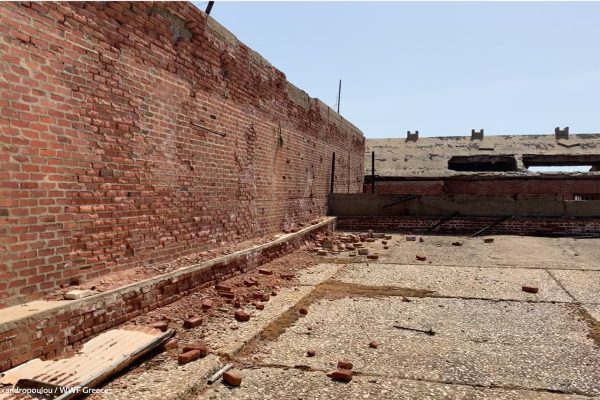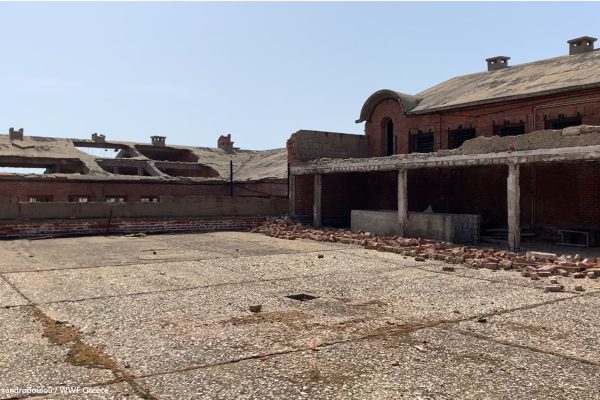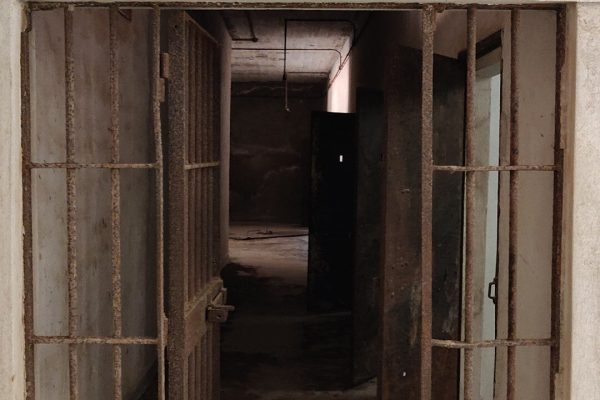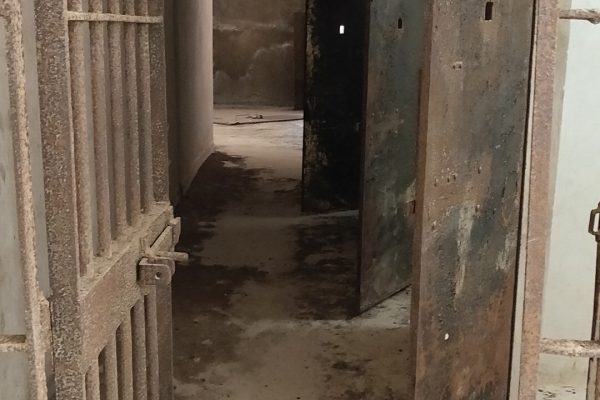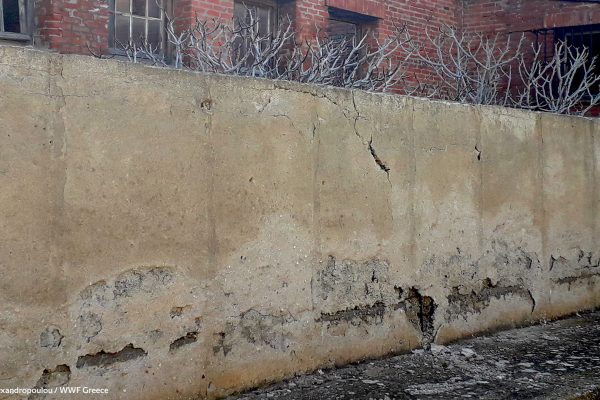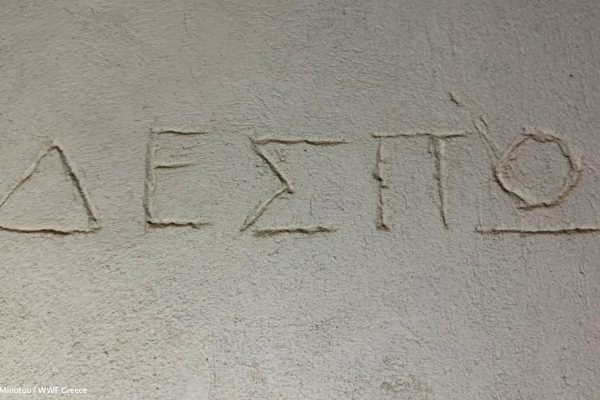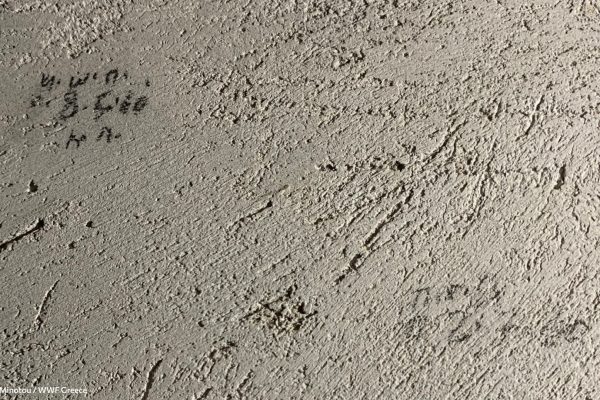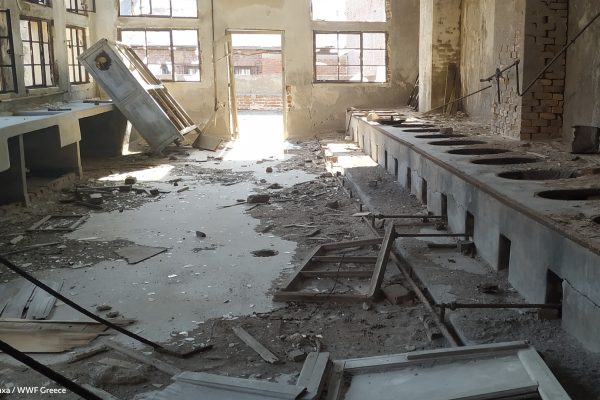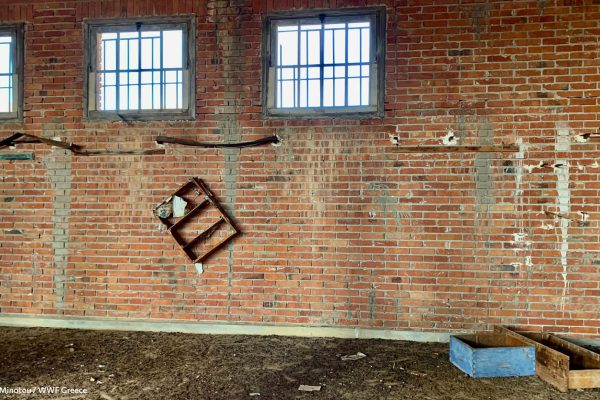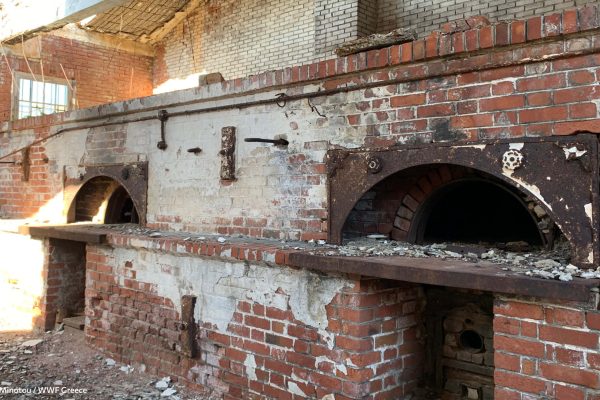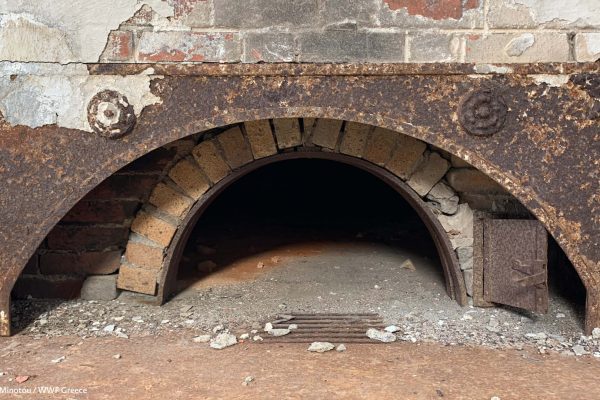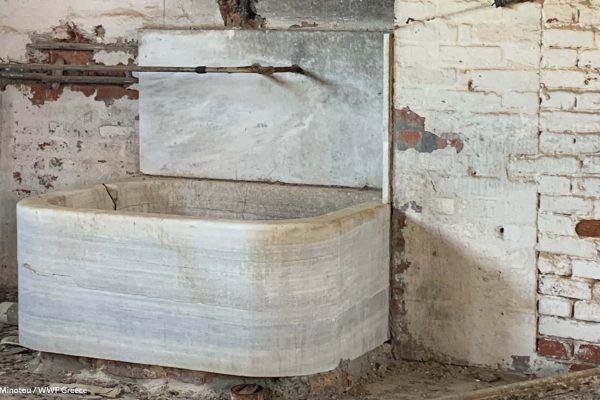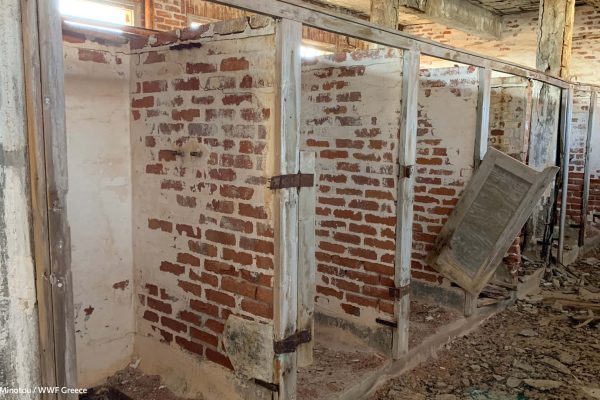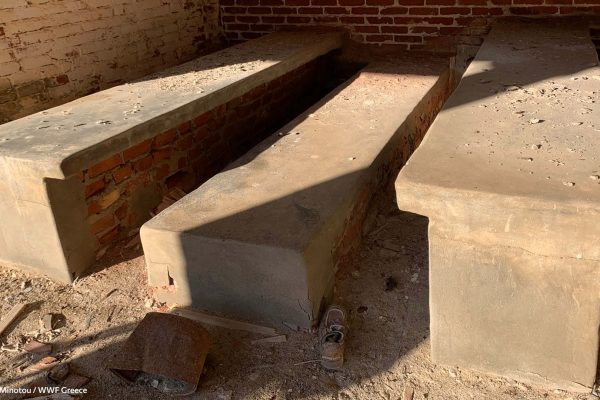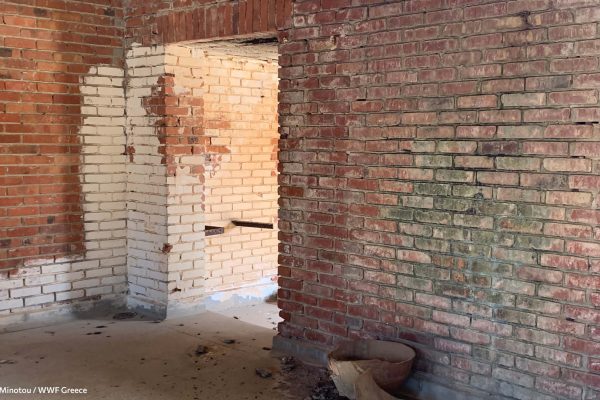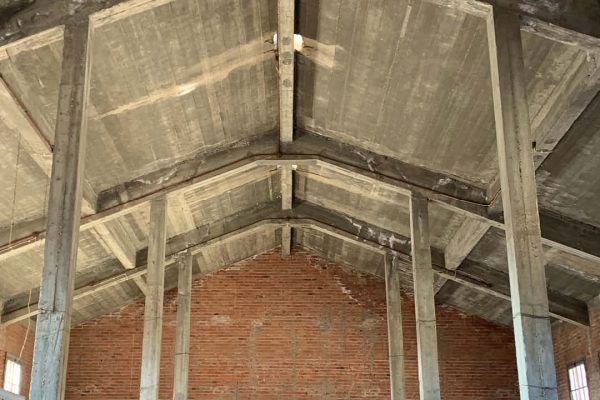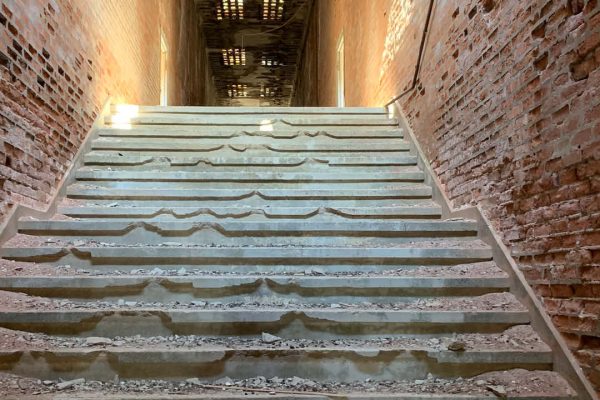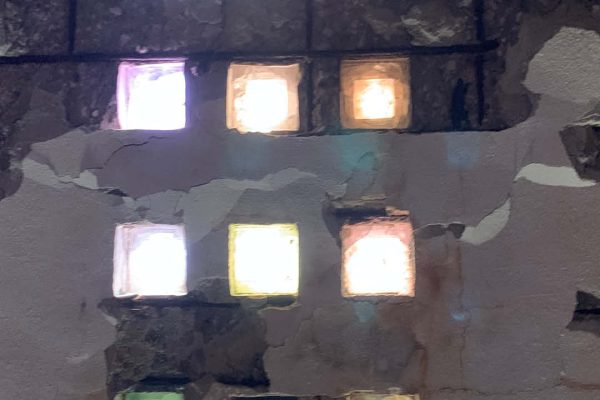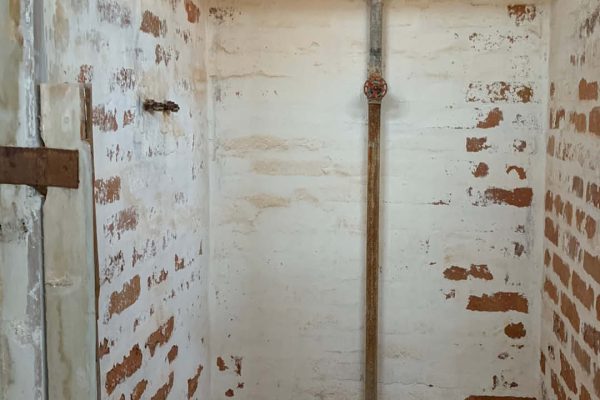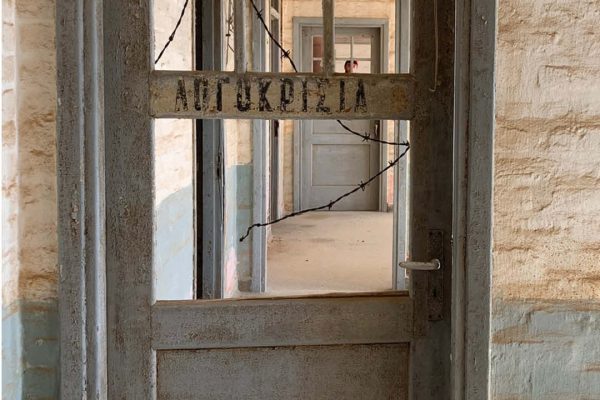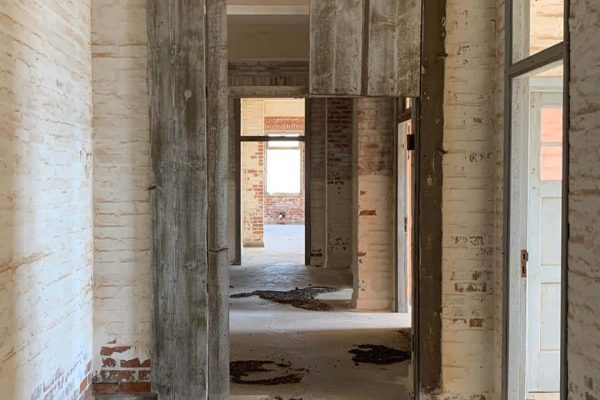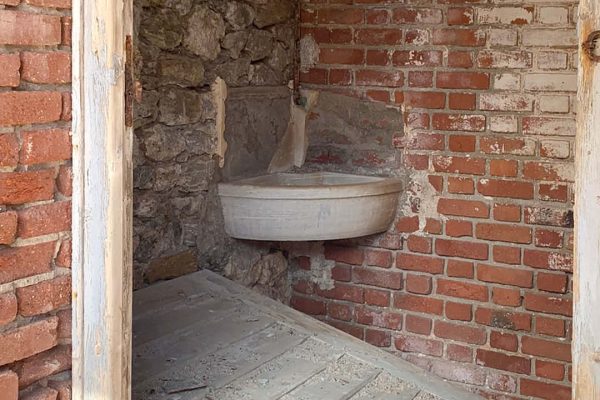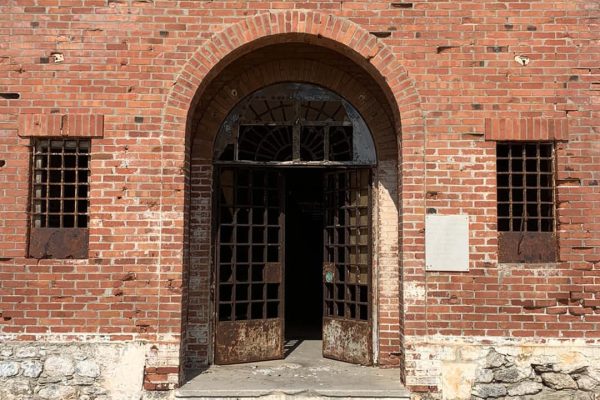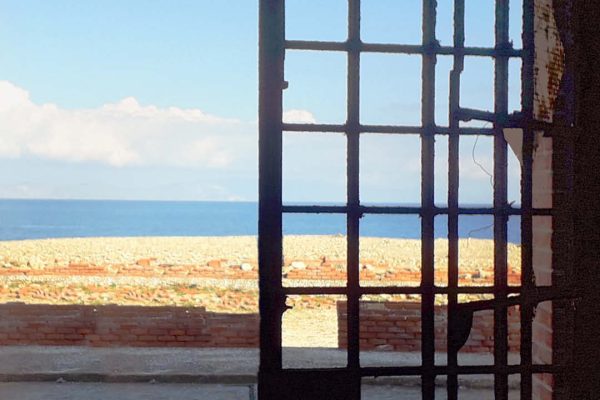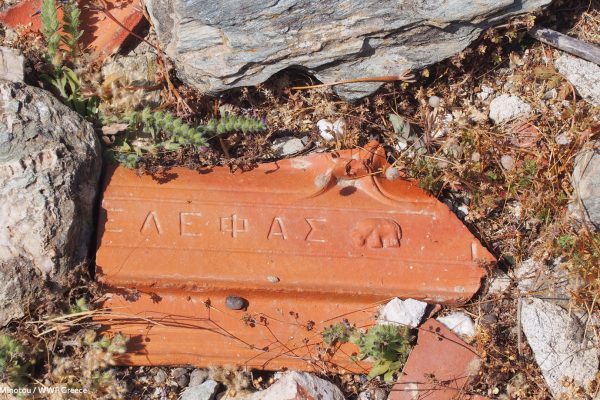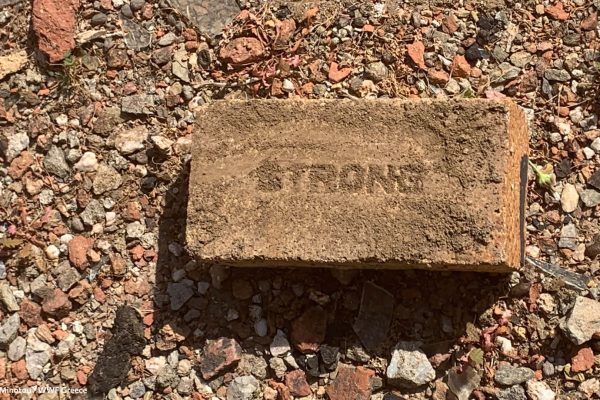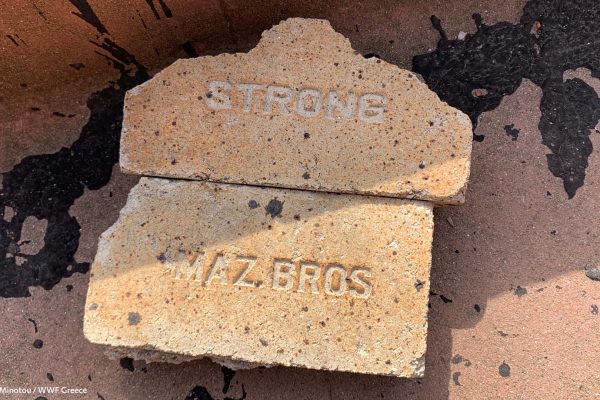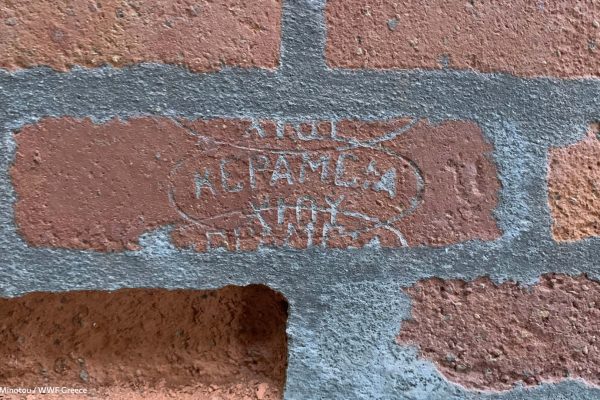... virtually ...
Gyaros / virtually
Gyaros has been a place of exile and imprisonment. Since 2001, the five bays on its eastern side have been designated as a historical site, and the buildings as preserved. Gyaros also served as a target practice range for the Hellenic Navy. It is the first Marine Protected Area in the Cyclades and also belongs to the European Natura 2000 Network. In the sea caves of Gyaros, 10% of the Mediterranean monk seal global population is found here. The combination of Gyaros’ historical and cultural heritage and its significant biodiversity and environmental value gives it a dual identity: an important site of historical collective memory and in parallel a natural areawith important species and habitats in need of protection and management.
The virtual tour of Gyaros was based on the creation of paths with stops at the island’s most significant points of interest with historical, social, and environmental significance. The map displays the stops with numerical numbering, and by selecting any of them, visitors can “travel” to that specific point or follow the entire route. Photographic material, videos, and audio files (soundscapes) have constituted the material for virtual representation. The combination of visual material and soundscapes (SS) accurately and comprehensively provides the depiction of each point. The photographic material follows the route’s flow to realistically convey the landscape. At each point, there is also a brief audio guide (AG).
Trails to Gyaros
Stream of the 5th bay (AG)
Stream of the 5th bay Winter (SS)
17. Hospital
On the way to the 4th bay, the landscape is dominated by the ruins of small stone houses and auxiliary buildings. The two large buildings, one for energy production and the hospital, indicate the large number of prisoners who lived in Gyaros and the need to meet their requirements. The wetland with its characteristic plants, the stone outdoor constructions, such as the washing basins, the wire meshes lying on the ground, and large rusted barrels pierced by bullets from the period when Gyaros served as a shooting range for the Navy, are points of reference and memory. The Hospital building, now filled with excrements from wild goats, is the only building in Gyaros without bars on the windows. Windows that once allowed light to accompany those who needed to recover inside.
Hospital (AG)
Hospital Winter (SS)
Hospital Spring (SS)
18. Stream and well pump station
The ailanthus trees, also known as paradise trees in English, border the buildings along the stream. The large water tank and pump, which served in managing Gyaros’ water, surrounded by imposing cypresses and eucalyptus trees on both sides of the stream, follows the flow of the water. It is the only area in Gyaros where at least a little water remains during the summer months. At the end of the stream, towards the slopes of Gyaros, a small waterfall is created during winter, shaping a unique soundscape in combination with the birdlife hosted in the area.
Stream and well pump station (AG)
Stream and well pump station_1 Winter (SS)
Stream and well pump station_2 Winter (SS)
Stream and well pump station_1 Spring (SS)
19. Path, view point NE, SE
Following the path to the 3rd bay, faded signs that read “suspicious area” next to the dry stone walls and rusty wire fences create vigilance and concern for the visitor. The paths, created as part of the current program, have been inspected by the specialized unit of the army and cleared of any remaining ammunition from the period when Gyaros served as a shooting range. The euphorbias or flomoi, known as milkweeds, which are characteristic plants of coastal vegetation, with their seasonal color changes from greenish-yellow to red, or even completely bare from vegetation, alter the landscape season by season.
Path, view point NE, SE (AG)
Path, view point NE, SE Spring (SS)
20. Camp and monument of 3rd bay
Arriving at the 3rd bay, we encounter the material remnants of a confined life. The restricted living conditions, aimed at changing the political beliefs of the exiles, were part of the discipline and rules of each bay. The small monument, in the coastal zone, served as a religious escape. A stream ended in each bay. Around it, amphitheatrically, the camps were constructed. A well, a wild olive tree, and a eucalyptus delineate the border of the path with the camp.
Camp and monument of 3rd bay (AG)
Camp and monument of 3rd bay Spring (SS)
Camp and monument of 3rd bay Winter (SS)
21. 2nd bay’s Path, NE viewpoint
On the path, the scrub vegetation accompanies the visitor. The purple color and the scent of thyme in the summer are distinctive. Orchids and other plant species serve as reference points for biodiversity. The harmless black snake of Gyaros finds refuge in the rocky landscape of the island. The camp of the 2nd bay stands out amphitheatrically.
2nd bay’s Path, NE viewpoint (AG)
2nd bay’s Path, NE viewpoint Winter (SS)
2nd bay’s Path, NE viewpoint Spring (SS)
22. Path, 2nd bay camp
Along the stream of the bay and at the border of the camp, a large arched stone bridge for water management highlights the relief of the area. The space of each tent was limited, and the number of prisoners sharing it was too many according to testimonies. An impressively constructed stone staircase, a product of forced labor by the prisoners, facilitated movements within the camp. The guarding outposts on the slopes, the ruins of auxiliary buildings, and the few pine trees found on Gyaros bear witness to an entrenched living.
Path, 2nd bay camp (AG)
Path, 2nd bay camp_1 Winter (SS)
Path, 2nd bay camp_2 Winter (SS)
Path, 2nd bay camp Spring (SS)
23. Path, 1st bay camp, Commander's house
The Commander’s house is located at the highest point of the bay to allow supervision of the entire camp area. This camp is the largest compared to the camps in other bays and it accommodated up to 5,500 people and was the “capital”. Infrastructures for living needs, stone wells, an outdoor gathering area for prisoners, rusted wire fences, and barrels that serve as during the period when Gyaros was a shooting range compose the landscape. On all surrounding slopes, one can discern the guarding outposts.
Path, 1st bay camp, Commander’s house (AG)
Path, 1st bay camp, Commander’s house Winter (SS)
Path, 1st bay camp, Commander’s house Spring (SS)
24. Old settlement of the 1st bay
In a location outside the exiles camp, there are ruins of buildings from an old settlement dating back to the time when Gyaros had inhabitants engaged in agricultural and livestock activities. The ruins belonged to a small village of fishermen who lived mainly by fishing purpura (Purpura haemastoma) to extract a natural pigment with an indelible deep red color.
Many stone constructions such as stairs, dry stone walls, and retaining walls confirm that the art of stone is timeless, enduring over time and serving as shelters biodiversity. The elevated small grove with cypresses hosts various bird species and is located on the edge of the bay’s stream.
Old settlement of the 1st bay (AG)
Old settlement of the 1st bay Winter (SS)
Old settlement of the 1st bay Spring (SS)
25. Beach of the 1st cove-guardhouse
The beach of the 1st bay was historically the point where ships approached and anchored and the first prisoners went down there. Like all the beaches on the island, it is characterized by pebbles and stones. At the edge of the beach, one of the largest guarding outposts on the island remains untouched by time, serving as a reminder that Gyaros was a harsh, cruel and inhospitable place confirming the characterization of the area as «Calvary». Around the beach, the barren landscape, the slopes, and the guarding outposts evoke memories of confinement.
Beach of the 1st cove-guardhouse (AG)
Beach of the 1st cove-guardhouse Winter (SS)
Beach of the 1st cove-guardhouse Spring (SS)
26. Cemetery of Exiles
Climbing the cliffs, the panoramic view of the 1st bay and the camp brings back, through the oblivion, the social memory. Like a representation of the past, the remaining materials are evidence of a confined life. The simple cemetery of those who did not endure the pain, restriction, and hardships gazes towards the free horizon, liberating look and soul.
Cemetery of Exiles (AG)
Cemetery of Exiles Winter (SS)
Cemetery of Exiles Spring (SS)
27. Ridge point of panoramic view
The view from the ridge is breathtaking. The islands of Andros, Tinos, Syros and Mykonos can be seen on the horizon. The barren Gyaros with the Cycladic relief, the dry stones that smoothly follow the slopes and the paths and the five bays with the ruins of the buildings highlight the island of Gyaros as a unique point of reference for natural and cultural heritage, a place of historical memory and nature protection.
Ridge point of panoramic view (AG)
Ridge point of panoramic view Winter (SS)
28. Ridge, 360-Degree Viewpoint
From one of the highest elevations at the ridge top of Gyaros, the horizon stretches endlessly. From Glaronisi and Foues to all the islands that can be distinguished in the four points of the horizon, Gyaros, in solitude, serves as reservoirs of memory and biodiversity.
Ridge, 360-Degree Viepoint (AG)
Ridge, 360-Degree Viepoint Winter (SS)
Chapel, Panoramic Viewpoint (AG)
Chapel, Panoramic Viewpoint Winter (SS)
30. Ridge Viewpoint
The path along the ridge line, with its rocky terrain imposing itself and the dry-stone walls guiding the way, takes the visitor to the more challenging terrain of the island. Reminders of bullets and shells forgotten from the past reminds that the island has served as a shooting range for the Navy.
Ridge Viewpoint (AG)
Ridge Viewpoint _1 Winter (SS)
Ridge Viewpoint _2 Winter (SS)
31. Underwater Trail
Gyaros is part of the Natura 2000 european network of protected areas and hosts a unique marine ecosystem. Different species live and breed in its waters and marine habitats. Underwater paths have been designed and can lead the visitor to spectacular sea-scapes. The Mediterranean monk seal (Monachus monachus) lives and reproduces in the caves and beaches of Gyaros.
Underwater Trail (AG)
Α. The internal prison courtyards
In the inner courtyards, the inmates would gather when permitted. The spaces were large, with minimal covered areas exposed to the blistering sun, surrounded by fences and doors. The red color bricks of the prison walls intensified the sense of confinement. Personal belongings and everyday items left scattered around in the courtyards serve as reminders of the harsh living conditions.
Internal prison courtyards Spring (SS)
Β. Prisons: Isolation
Isolation was a place of absolute discipline and strict punishment. The tiny, windowless cells highlight physical and mental confinement. In the darkness and solitude, every thought becomes precious, especially when expressed through messages, writings, and portraits curved on the walls of the cells. By looking at the invisible, we are led to thoughts and reflections. Through these thoughts and reflections, we, as visitors, can discover and find immaterial deposits of memory.
Prison: Isolation (AG)
Prison: Isolation Spring (SS)
C. Prison interiors
The ruins of the prisons evoke emotional intensity. From the censorship office to the common areas, the rusted railings and doors, the distinctive everyday infrastructure, the structural materials, and the surreal colorful stained glass of the ceiling reveal the constrained existence, the value of everyday objects, the significance of social coexistence, and the freedom of body and mind. The prisons of Gyaros touch upon history and social memory.
Prison interiors (AG)
CREDITS ‘VIRTUALLY’ – ‘LIBRARY’
Material Design, Texts, Narratives, Text Translations: Charikleia Minotou
Audio Recordings and Audiovisual Material: Fanis Maragos
Editing and Processing of Visual Material, Graphics: Pavlina Alexandropoulou
Data Collection and Processing: Charikleia Minotou, Aristotelis Philippos Skiadaresis
Narrations: Charikleia Minotou, John Nikoloudakis Minotos, Cjay Tshimanga
Photos and Videos: Charikleia Minotou, Fanis Maragos, Aristotelis Philippos Skiadaresis, Pavlina Alexandropoulou, Apostolis Zamplakos, Giorgos Katsadorakis, Christos Papadas, Giorgos Rigoutsos
Special Thanks to the WWF Greece Team: Amalia Alberini, Vicky Denaxa, Anneza Georgopoulou, Apostolis Zamplakos, Natalia Kalevra, Spyros Kotomatas, Ventouris Mpountouris, Giannis Prevedouros, for their contribution to the implementation of the entire project.



